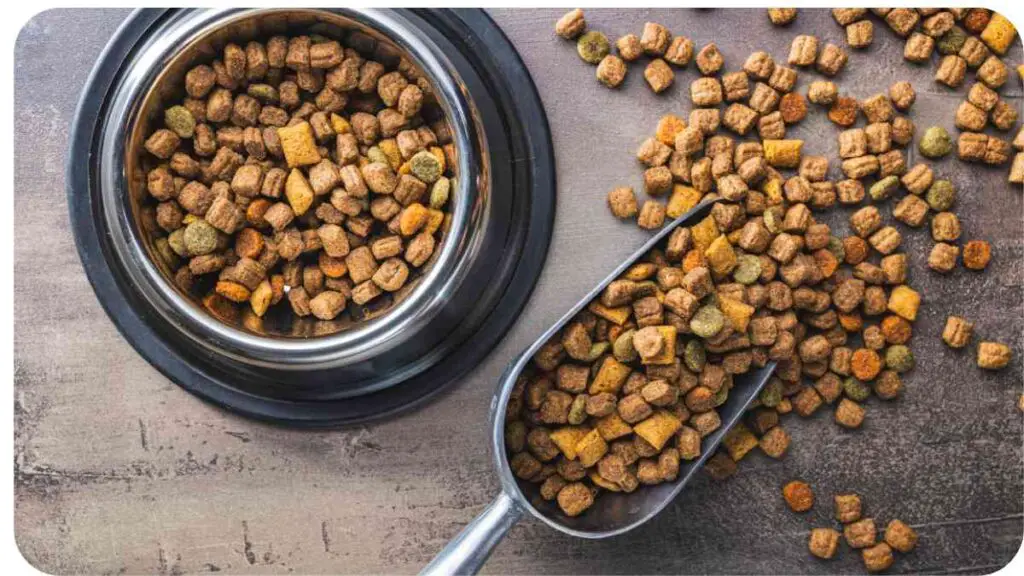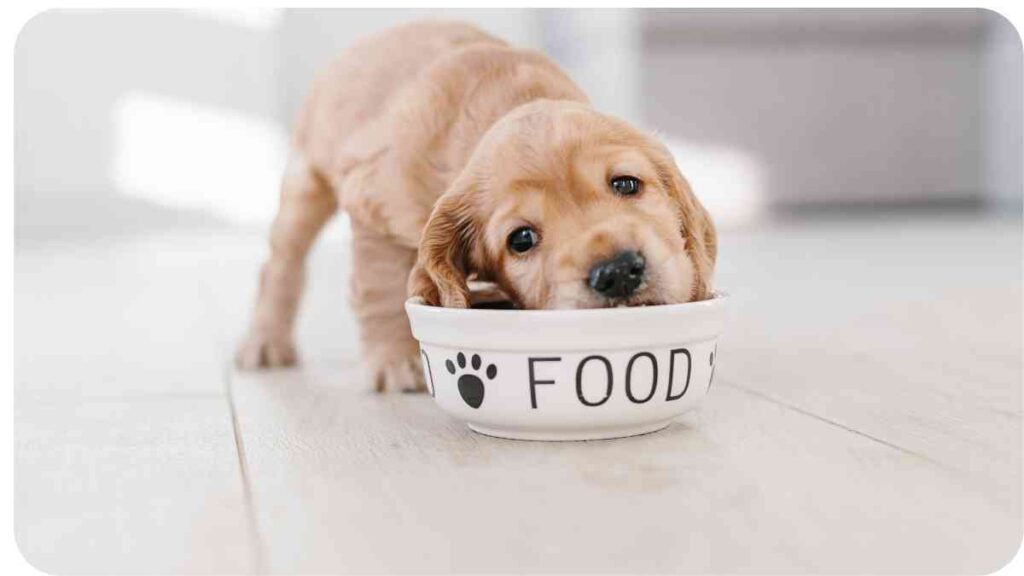When it comes to keeping our furry friends happy and healthy, one of the biggest questions pet owners have is, “How much food should my 15-pound dog eat each day?” Balancing your dog’s diet can seem tricky, but understanding their nutritional needs and how to adjust their food intake can make all the difference.
In this guide, we’ll dive into the basics of dog nutrition, factors affecting your dog’s food intake, and how to tailor their diet to fit their specific needs. So, grab a treat for your pup and let’s get started!
| Takeaways |
|---|
| Determine your dog’s daily food needs based on weight, age, and activity level. |
| Use calorie calculators and feeding guidelines as a starting point. |
| Measure your dog’s food accurately using standard tools. |
| Choose high-quality dog food and read labels carefully. |
| Adjust food portions gradually if your dog needs to lose or gain weight. |
| Monitor your dog’s weight and health regularly to make necessary adjustments. |
| Consult with your veterinarian for personalized feeding advice and to address any special dietary needs. |
Understanding Dog Nutrition

Basic Nutritional Requirements
Just like us, dogs need a balanced diet to stay healthy. Their meals should consist of proteins, fats, carbohydrates, vitamins, and minerals. Think of their diet as a well-rounded plate where each nutrient plays a crucial role. Proteins are essential for muscle development, fats provide energy, and carbohydrates give them that extra pep in their step. Vitamins and minerals support overall health and immune function.
Choosing the right food for your dog can be challenging. To ensure you provide the best nutrition, consider checking out our guide on best food for Alsatian dogs. It offers valuable recommendations tailored to your pet’s needs.
Here’s a quick table summarizing these nutrients:
| Nutrient | Function | Example Sources |
|---|---|---|
| Proteins | Muscle growth and repair | Chicken, beef, fish |
| Fats | Energy and skin health | Fish oil, chicken fat |
| Carbohydrates | Energy and digestive health | Rice, sweet potatoes |
| Vitamins | Immune support and overall health | Fruits, vegetables |
| Minerals | Bone health and hydration | Bones, leafy greens |
Macronutrients and Micronutrients
Macronutrients are the nutrients that are needed in larger quantities, such as proteins, fats, and carbohydrates. Micronutrients, including vitamins and minerals, are needed in smaller amounts but are equally important. Both macronutrients and micronutrients work together to keep your dog in tip-top shape.
Factors Affecting Food Intake
Age and Activity Level
Your dog’s age and activity level greatly influence their daily food intake. Puppies and active dogs require more calories compared to older or less active dogs. Think of it like this: a playful puppy with boundless energy will need more fuel than a relaxed senior dog lounging around the house.
| Age Group | Activity Level | Daily Caloric Needs (Approx.) |
|---|---|---|
| Puppy | High | 40-60 calories per pound |
| Adult (Active) | High | 30-40 calories per pound |
| Adult (Sedentary) | Low | 20-30 calories per pound |
| Senior | Low | 20-25 calories per pound |
Breed Considerations
Different breeds have varying energy needs. For instance, a Labrador Retriever, known for its energetic nature, will need more food compared to a smaller, less active breed like a Dachshund. Always consider your dog’s breed-specific needs when determining their food intake.
Understanding your dog’s caloric needs is crucial for their health. For detailed information on how many calories are in 1/2 cup of dog food, refer to our comprehensive guide that helps in managing their diet effectively.
Health Conditions
Health conditions can also affect your dog’s diet. For instance, dogs with diabetes may need a special diet to regulate their blood sugar levels. Always consult your vet if your dog has any health conditions that might require dietary adjustments.
Determining Daily Caloric Needs
Using a Calorie Calculator
To get a precise idea of how much food your dog should eat, you can use a calorie calculator. These tools take into account your dog’s weight, age, and activity level to provide a tailored recommendation. You can find various online calculators or ask your vet for one suited to your dog’s needs.
Adjusting for Weight Loss or Gain
If your dog needs to lose or gain weight, you can adjust their food intake accordingly. Gradual changes are best cutting or adding too much food too quickly can upset your dog’s digestive system.
Choosing the Right Dog Food

Types of Dog Food
Choosing the right dog food is essential for meeting your dog’s nutritional needs. Here’s a quick overview of different types:
| Food Type | Description | Pros | Cons |
|---|---|---|---|
| Dry Food | Kibble or pellets | Convenient, helps with dental health | Can be less palatable |
| Wet Food | Canned or pouch | More moisture, often more appetizing | Can be more expensive |
| Raw Food | Uncooked meats and vegetables | Natural diet, high in nutrients | Requires careful handling |
| Homemade Meals | Home-cooked meals | Customizable, fresh ingredients | Time-consuming, requires supplements |
Reading Labels and Ingredients
When picking dog food, always read the labels and ingredients list. Look for high-quality proteins, minimal fillers, and no artificial additives. A good dog food label will have real meat as the first ingredient and a balance of other nutrients.
Hydration is vital for dogs, but how much of their body weight is water? Learn more about this important aspect of dog health in our article on how much of a dog’s body weight is water, which provides essential insights for proper care.
How to Measure Your Dog’s Food
Portion Control
Measuring your dog’s food accurately helps maintain their ideal weight. Use a standard measuring cup or scale to portion out their meals. Consistency in portion sizes is key to preventing overfeeding or underfeeding.
Using Measuring Tools
Invest in quality measuring tools to ensure accuracy. Measuring cups, kitchen scales, and food dispensers can help you keep track of how much food your dog is getting each day.
Sample Feeding Guidelines
Dry Food
For a 15-pound dog, the typical range is about 1 to 1.5 cups of dry food per day, depending on the brand and nutritional content. Always check the feeding guidelines on the food packaging for specific recommendations.
Wet Food
If feeding wet food, you might give around 1 to 1.5 cans per day for a 15-pound dog. Again, refer to the specific feeding instructions provided by the manufacturer.
Homemade Meals
When preparing homemade meals, a 15-pound dog typically needs about 1 to 1.5 cups of cooked food per day. This includes proteins, vegetables, and carbohydrates. Be sure to consult with your vet to ensure the diet is balanced.
If your dog has a yeast infection, it’s important to address it promptly. Our article on treating a yeast infection on your dog’s paw offers practical tips and solutions for effective treatment.
Common Feeding Mistakes
Overfeeding and Underfeeding
Overfeeding can lead to obesity, while underfeeding can cause malnutrition. Both can affect your dog’s health negatively. Be mindful of portion sizes and adjust as needed based on your dog’s weight and activity level.
Ignoring Special Needs
If your dog has specific dietary needs due to health issues or allergies, make sure to address them. Special diets might require tailored food portions or specific types of food to keep them healthy.
Monitoring and Adjusting Food Intake

Signs of Over or Underfeeding
Keep an eye out for signs of overfeeding like excessive weight gain or underfeeding such as weight loss or lethargy. Regular monitoring helps you make necessary adjustments to your dog’s diet.
Regular Weight Checks
Weigh your dog regularly to ensure they are maintaining a healthy weight. Small adjustments to their food intake can make a big difference over time.
Consulting with Your Veterinarian
When to Seek Professional Advice
If you’re unsure about how much food your dog should be eating, or if you notice any health issues, consult your vet. They can provide professional advice and help you create a customized feeding plan.
Finding the right pain relief for your dog can make a big difference. Discover the best options available in our guide on the best pain medicine for a dog, which provides insights into effective treatments for your furry friend.
Creating a Customized Feeding Plan
Your vet can help you develop a feeding plan that considers your dog’s unique needs. This plan will take into account their weight, age, activity level, and any special dietary requirements.
Conclusion
Finding the right amount of food for your 15-pound dog is a balancing act that involves understanding their nutritional needs, activity level, and health conditions. By using a combination of calorie calculators, feeding guidelines, and quality dog food, you can ensure your furry friend stays healthy and happy.
Remember, each dog is unique, so it’s essential to monitor their weight and adjust their food intake as needed. Consulting with your veterinarian can provide additional guidance and help tailor a feeding plan specific to your dog’s needs. With the right approach, you’ll keep your pup in great shape and give them the best chance to enjoy a long, healthy life.
FAQs
1. How can I determine the exact amount of food my dog needs?
Use a calorie calculator that considers your dog’s weight, age, and activity level. Additionally, consult your veterinarian for a personalized feeding plan.
2. What should I do if my dog is gaining weight?
Reduce the amount of food and increase exercise. Monitor their weight regularly and consult with your vet for further advice.
3. Can I mix dry and wet food for my dog?
Yes, mixing dry and wet food can be beneficial for variety and hydration. Just ensure you’re adjusting the total daily amount to avoid overfeeding.
4. How often should I feed my dog?
Typically, feeding twice a day is ideal for most dogs. Puppies might require more frequent meals. Adjust based on your dog’s specific needs and schedule.
5. Are there any signs that I’m overfeeding my dog?
Signs of overfeeding include weight gain, lethargy, and difficulty in physical activities. Regularly check your dog’s weight and adjust their food intake as needed.
Further Reading
- Purina: How Much Should I Feed My Dog?
This guide from Purina offers a comprehensive look at determining your dog’s daily food needs based on their weight and activity level. - Sundays for Dogs: How Much Should I Feed My Dog?
This article provides a detailed guide on feeding dogs, taking into account their weight and age to help you find the right portion sizes. - Darwin’s Pet: Feeding Chart for Dogs
Darwin’s Pet offers a complete feeding chart that simplifies understanding how much food your dog needs based on their size and dietary requirements.
FAQs
What factors influence how much food my 15-pound dog should eat?
Several factors affect your dog’s food intake, including their age, activity level, and health conditions. Puppies and active dogs need more food compared to older or less active dogs.
How can I accurately measure my dog’s food?
Use a standard measuring cup or kitchen scale to portion out your dog’s food. Consistency is key to preventing overfeeding or underfeeding.
What should I do if my dog is not eating the recommended amount of food?
If your dog isn’t eating as much as recommended, check for health issues or changes in behavior. Consult your vet to rule out any problems and adjust their diet if necessary.
Can I mix different types of dog food to meet my dog’s nutritional needs?
Yes, mixing dry and wet food can be beneficial for variety and hydration. Just ensure the total daily amount is appropriate to avoid overfeeding.
How often should I adjust my dog’s food intake?
Regularly monitor your dog’s weight and health. Adjust their food intake based on their weight changes, activity level, and any advice from your veterinarian.

I am Dr Hellen James a veterinarian, pet lover, and writer. I have many years of experience caring for pets, including dogs, cats, birds, and fish (and even axolotls!). I love spending time with the animals in my life, especially when they are sick or need love.

